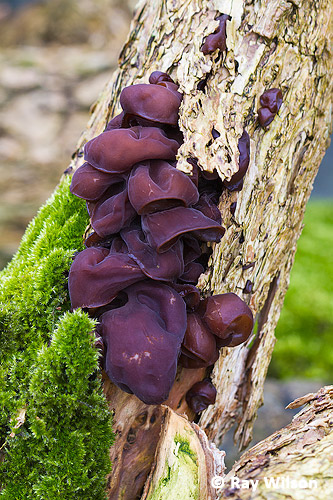
Such a molecular clarification of the major domesticated varieties provided directional information for developing breeding strategies. Further analysis of differentially expressed unigenes confirmed the PCA result. Principal component analysis (PCA) revealed that all three varieties had distinguishable gene expression profiles, but Quanjin was unique relative to the other two varieties. auricula-judae varieties in China, fruiting bodies from three cultivated strains (each represents a major variety) were examined for gene expression profiles using transcriptome sequencing: 13,937 unigenes were identified, and 12,813 were annotated. To determine the molecular relationships of the three major A. Tuoliensis 15 and Cordyceps militaris 22. Many transcriptome studies have been performed for mushroom species, including Lentius edodes 18, 19, Ganoderma lucidum 20, Agrocybe aegerita 21, Auricularia polytricha 14, Pleurotus eryngii subsp. Moreover, transcriptome sequencing does not require a reference genome for data analysis 13, 16, 17. Comparative transcriptome analysis is an effective way to compare gene expression patterns between different subjects and to provide insights into biological processes 14, 15.

Next-generation sequencing (NGS) technology is extensively used in life sciences for genome sequencing, transcriptome sequencing, and metagenomics sequencing 12, 13. Pictures show the apical and basal sides of the fruiting bodies of Wujin (Panels a and b), Banjin (Panels c and d), and Quanjin (Panels e and f). auricula-judae genome nor any transcriptome dataset is publicly available, representing a major barrier for molecular studies.

Molecular studies can provide accurate identification and clarification of wild and domesticated varieties, thus facilitating breeding programs. Despite previous reports of genetic markers using analyses of inter-simple sequence repeat (ISSR), random amplification of polymorphic DNA (RAPD), and sequence related amplified polymorphism (SRAP) 4, 5, 9– 11, the molecular/genetic bases of differences between the three major Chinese varieties are largely unknown. Quanjin originated from northern China, whereas Wujin and Banjin were more commonly cultivated in southern regions. All three varieties in China are believed to have been domesticated from wild origins. The physiological function of the wrinkles is to be determined although possibilities on reflecting nutrition and quality are widely implicated in the food market. The number and depth of wrinkles were deployed for cultivar identification purposes in China 7. The surface wrinkles (also known as veins) have been described as one of the major features of fruiting bodies 6– 8. auricula-judae varieties in China: Wujin (smooth), Banjin (partially wrinkled), and Quanjin (fully wrinkled) (Fig. auricula-judae has been widely cultivated in large areas of Jilin, Heilongjiang, Henan and Hubei provinces in China, and the yield is ranked fourth in the world for mushroom production 4, 5.īased on the morphological characteristics of fruiting bodies, there are three major A.

auricula-judae is also used as a traditional Chinese medicine with anti-tumor, detoxification, anticoagulant, hypoglycemic, and cholesterol-lowering properties 1– 3. The fruiting bodies are routinely consumed as an important edible mushroom in China. The Auricularia auricula-judae mushroom is commonly known as Jew’s ear, wood ear and jelly ear. auricula-judae sequences to public database, establishes the relationships among major cultivars, and provides molecular guidance for breeding and cultivation. Using the KEGG database, significant alternations in biological pathways were detected among the three cultivars. Such relationships were further supported by analyses of annotated and unannotated unigenes, differentially expressed unigenes, gene ontology functions, and the family of peroxidase genes. Principal component analysis (PCA) determined that the gene expression profile of Quanjin was unique when compared to those of Banjin and Wujin.

auricula-judae, highlighting the lack of publicly available reference sequences for this economically important species. Among them, only 13 unigenes were annotated to A. Biological triplicates were performed to determine the expression levels of 13,937 unigenes. auricula-judae cultivated varieties (Wujin, smooth Banjin, partially wrinkled and Quanjin, fully wrinkled) collected from Jilin Province, China. Here for the first time, we present comparative transcriptome analyses of the fruiting bodies of three morphologically distinguishable A. Auricularia auricula-judae is an edible mushroom and a traditional medicine in China as well as the fourth largest cultivated mushroom species in the world.


 0 kommentar(er)
0 kommentar(er)
